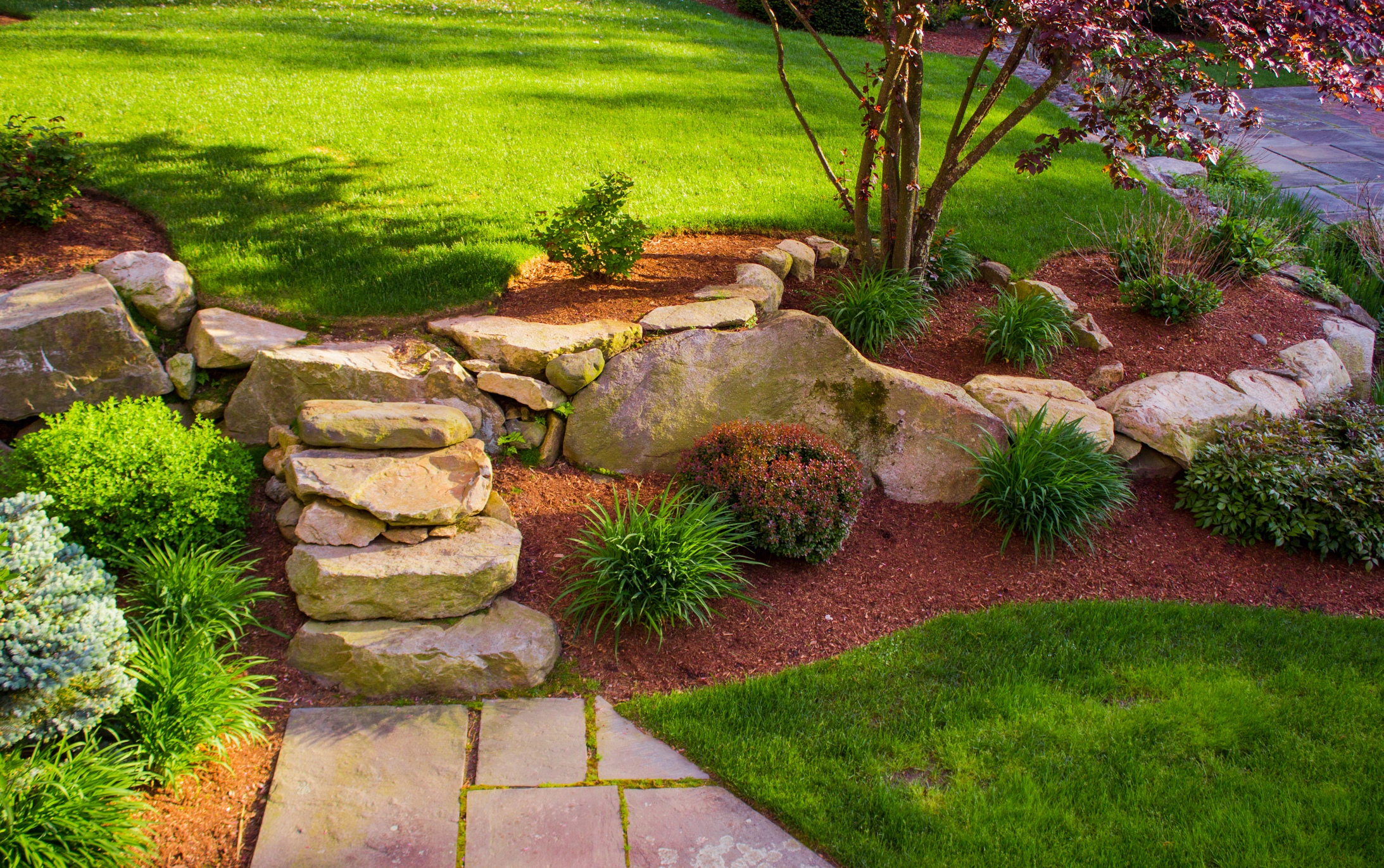
Georgia’s climate is one of the desirable traits that attract people to move here along with beautiful landscaping. We have the luxury of experiencing all four seasons in a year; locals know that sometimes it feels like we get all four seasons in a couple of weeks. Preparing to heat and cool your home for each season can be a stressful task for homeowners. However, in a developed country like ours, we often overlook the abundance of resources that nature provides. Utilizing shade trees, wind blockers, ground coverage, and water sources can help reduce the amount of energy needed to maintain a comfortable indoor temperature. This not only saves you money but also contributes to the preservation of our planet by minimizing unnecessary harm.
To do this effectively, we want to take advantage of the natural conditions. In the winter we want to take as much warmth from the sun as possible, and in the summer, we want to utilize the gift of shade. Deciduous trees get the job done because they start shedding their leaves in the autumn, inviting the sun to come through during the winter. Maple trees are exceptional shade trees due to their structure and large leaf size. Crabapple and magnolia trees are great choices for flowering deciduous trees.
When choosing the location of your tree, plan for the full size. You want to make sure that you plant the tree at a sufficient distance from the house so that the roots do not damage the foundation. Trees grow slowly, but even shading the windows can greatly impact the temperature inside the home. Eventually, they will grow tall enough to provide optimal shade by blocking the sun from the roof. It is also important to consider aesthetics and the area with the most intense sun exposure in your home. Typically, planting trees to the south of the house will offer shade in the summer without obstructing the sun in the winter.
With the right combination of location and tree type, your home’s indoor temperature can be decreased by about 10 degrees from shade alone. Trees of Georgia.
I think it is safe to say that most people have experienced a change in comfort due to windchill. Protecting yourself and your home from the wind will make a significant difference in the temperature inside your home. Believe it or not, windbreaks can save you about 25% on fuel consumption that you would normally use. It is generally advised to place blockers on the north and northwest sides of your home for maximum effect. However, you should assess where the wind meets your home specifically.
You will get the best results with shrubs or trees with low crowns. I suggest looking at evergreens for this purpose but be careful not to block the winter sun that we discussed earlier. Aucuba, Loropetalum, tea olive, and azaleas are some beautiful, dense shrubs that grow nicely in Georgia. Emerald green arborvitaes are my favorite selection of evergreens for the yard. They are often planted close together and can double as a privacy screen. Little gem magnolia and cypress trees are more examples that are just as stunning.
Cooling your property can begin at ground level. The ground can act as a potential heat source around your home, so it is important to provide shade or coverage at low levels as well. The darker your driveway is, the more likely it is to absorb heat, which in turn heats up your home. You could have fun selecting various types of greenery to provide shade for your driveway or patio. The options are practically limitless. Additionally, you can make use of groundcover vegetation to further reduce heat radiation. Bugleweed, juniper, and dianthus are a few low-growing plants that add beauty to the ground while also decreasing heat.
Maybe plants are not your forte. That is okay because you do not have to get your hands dirty to be energy efficient. Simply implementing the use of water can passively cool your home. A water fountain is an artificial way to achieve this without the hassle of constructing a pond in the backyard. The running water can help reduce the temperature of your home, thereby reducing the need for air conditioning.
Georgia residents need to prepare their homes for all types of weather. With special attention to detail, outdoor landscaping can help you save money on heating and cooling every year. In turn, we can reduce our carbon footprint and create a more sustainable environment. Read more on Planting Low Maintenance Landscaping For Your Home.